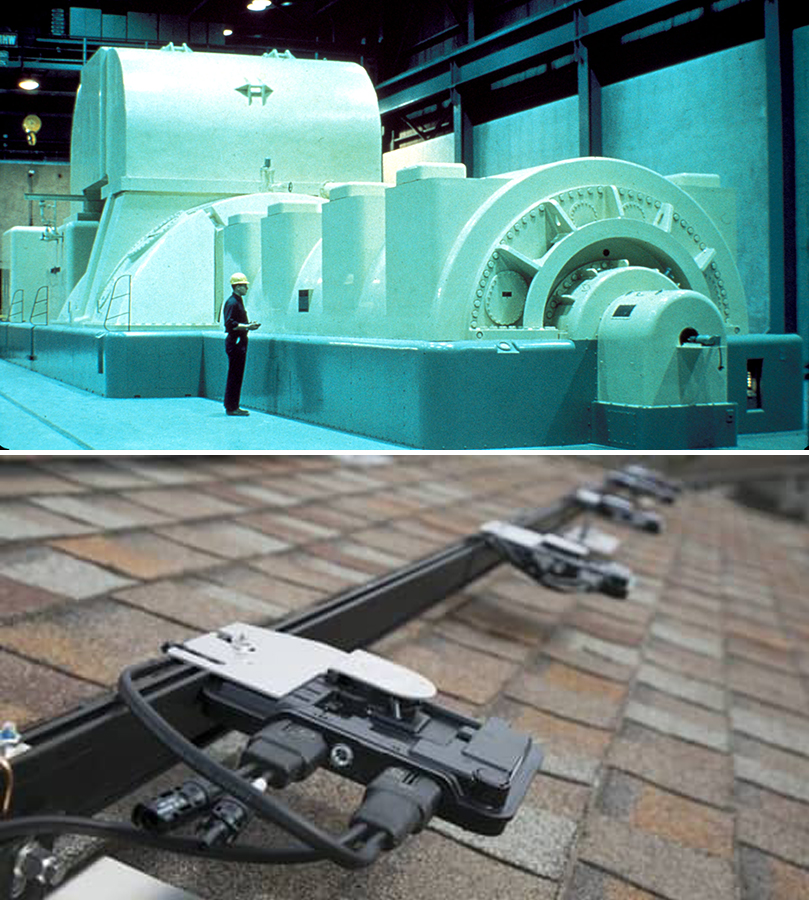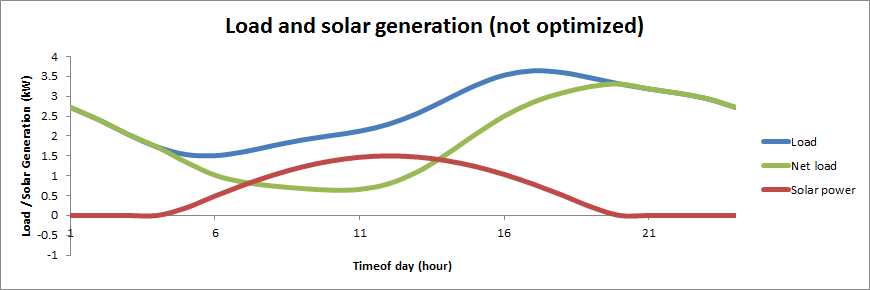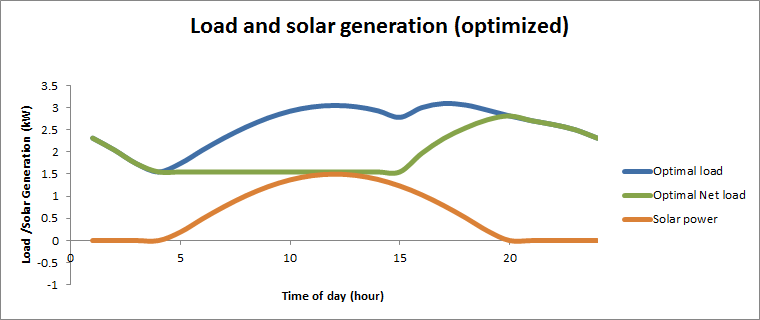

Overview
The purpose of this lesson is to introduce the students to the challenges of integrating solar energy to the electricity grid with the use of numerical simulations. More specifically, it is meant to shed light on the advantages (mentioned in the introduction of this document) and on the challenges (challenges 1 and 2 from the introduction) of solar energy.
Essential Question:
How can we optimize energy prices by controlling load and production?
NGSS Standards:
| Standard Number | Standard text |
| HS-ETS-1 | Analyze a major global challenge to specify qualitative and quantitative criteria and constraints for solutions that account for societal needs and wants. |
| HS-ETS-2 | Design a solution to a complex real-world problem by breaking it down into smaller, more manageable problems that can be solved through engineering. |
| HS-ETS-3 | Evaluate a solution to a complex real-world problem based on prioritized criteria and trade-offs that account for a range of constraints, including cost, safety, reliability, and aesthetics, as well as possible social, cultural, and environmental impacts. |
| HS-ETS-4 | Use a computer simulation to model the impact of proposed solutions to a complex real-world problem with numerous criteria and constraints on interactions within and between systems relevant to the problem. |
| SEP | Analyzing and interpreting data |
Background:
Solar energy production has seen fast gains in the past few years. The falling cost of photovoltaic (PV) cells and increased political support are major drivers of these gains.
Some of the advantages of solar power are the following:
- Cleaner production of energy compared to conventional sources such as natural gas and coal.
- Near zero operating costs. Light from the sun is free and maintenance costs are low.

However, despite the attractiveness of solar energy in light of the current environmental and climate crisis, solar energy still has challenges to overcome. Some of these challenges are:
- Solar panels do not produce electricity at night; People use electricity at night. Since the electric grid currently does not have the energy storage capabilities needed to store some of the energy produced during the day and use it to supply energy during the night, we need to find ways to do so.
- Investment costs are still relatively high.
- Its production is, to some extent, hard to predict. Although we are pretty good at predicting sunrise and sunset, predicting when a cloud is going to cover the sky is hard.
Objectives
The students will be familiar with the following concepts:
- Electric load, load profile, and net load
- Fixed and flexible load
- Solar power
- Electricity production costs
- Optimization
The skills that the students will learn/strengthen are:
- Interpreting and extracting information from plots and graphs
- Adjust parameters and run numerical simulations
- Solve word problems using a numerical simulation package
- Translate policy into numerical simulations
- Recognize a small optimization problem
Concepts/ vocabulary
Electrical Grid
An electrical grid is an interconnected network for delivering electricity from suppliers to consumers. It consists of generating stations that produce electrical power, high-voltage transmission lines that carry power from distant sources to demand centers, and distribution lines that connect individual customers.
https://en.wikipedia.org/wiki/Electrical_grid
Electrical load
An electrical load, or simply load, is an electrical component or portion of a circuit that consumes electric power. In electric power circuits examples of loads are appliances and lights.
https://en.wikipedia.org/wiki/Electrical_load
https://en.wikipedia.org/wiki/Electric_power_system
Load profile
A load profile is the variation in the electrical load versus time. A load profile will vary according to customer type (typical examples include residential, commercial and industrial), temperature and holiday seasons.



